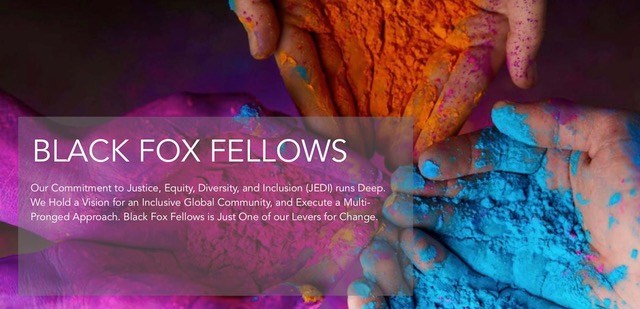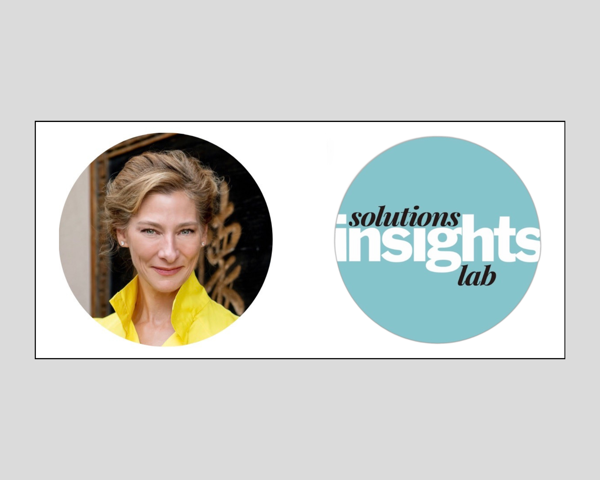by Natalie Rekstad, Founder & CEO, Black Fox Philanthropy, B Corp

Realizing we were publishing more and more pieces on burnout in the Black Fox Brief such as We Need to Talk about Mental Health in the C-Suite, and Our Burnout Moment is a Good Thing, we decided to create a written post for the busy among us who want to take in the ‘hacks’ quickly; however, a listen here can help anchor them into a practice.
Leadership in the social sector frequently demands hard work and long hours, which can result in diminished effectiveness and burnout. In response to this, we produced a session for the 2021 Skoll World Forum’s Wellness Hub entitled ‘From Burnout to Bliss’.
The session focused upon how to shift your mindset and approach, and accomplish more for your mission in a sustainable way. The session also featured a guided meditation designed to help participants attract the funder/grantee alliances you seek, while grounding you in sustainable practices to maintain both your mental and physical health. While the meditation is focused upon and mentions the Skoll World Forum, it can be repurposed to any environment or situation.
If you are taking the time to read/skim this post, chances are that you do not need a list of burnout symptoms; your own experiences and feelings likely led you to click on the link. However, since burnout can sneak up on us, this resource may offer a name for some feelings that you’ve found unnamable. We can be “fine”… until we’re not – crossing some invisible boundary.
As a former corporate executive, nonprofit founder and executive director for ten years, and founder and CEO of a B Corp social enterprise, I have the lived experience of – for years – burning the candle at both ends. Smart people learn from their own mistakes; really smart people learn from others’ mistakes. So I am going all ‘radical transparency’ on you so you can be in the latter category. 🙂
In this post, I’ll touch upon what drives us in unhealthy ways. I’ll share some high-level hacks to free you up so you work in your “zone of genius” while creating space for others that support you and your organization to thrive in their zones of genius. I’ll also get granular on some tried and true hacks for those of us with entrepreneur/creative/visionary brain.
To be candid, I am on this journey with you. I am a bit of a “cautionary tale” of how to do work and life wrong, but am on the other side of it now (most days). I don’t always get it right, but am delighted to share some of what I’ve learned over the last several years as founder who bootstrapped the beginning, and who is now at a place where I’ve made myself virtually obsolete in my own organization thanks to a great team and the infrastructure that is in place to support our Mission.
What drove me to the brink of burnout in the past are edges I still work on, but once I brought them out of the shadows, they have become gentler companions over time. I’ll name some of those edges here in case any of you can relate.
- I have a belief that I will let people down if I don’t meet their needs – in both my professional and personal life.
- This work, this sector, is a bodysnatcher – and most of us in the global space know this is one of our soul assignments. The stakes are just so high and there is always so much more to be done.
- I have a fear that if I am not on top of everything, then people will “find out” I’m not that smart (at least in the way that they are). Imposter Syndrome has driven me to some extent.
- I came up in the 1980s “do more, be more, have more” culture; in Washington, D.C. at that time, workaholism was a badge of honor.
- I came up in a culture that took the feminist message of “you can be anything” and hijacked it into “you have to be everything.” (For example, the Enjoli commercial from the late 70s – “The 8 hour perfume for the 24 hour woman”.)
- Last but not least, if I slow down I will have to feel the deep pain of my former marriage.
I unearthed these edges while completing my “Inner MBA” via the work of Robert Kegan and Lisa Lahey. They believe that change often fails because people focus solely on their behavior, but most efforts require both changes to a person’s skill set – along with adaptive changes to a person’s mindset. They posit: “Mindset transformation requires overcoming blind spots, unearthing our competing commitments, and freeing ourselves of limiting assumptions.”
In the course, I had to map out ways that block progress – ways and why we are immune to change despite the strong desire to change.
This was never meant to be public-facing, but we have a culture of radical transparency at Black Fox Philanthropy, and of inviting the whole person into the work. So I’m going to take a deep breath and bring that into the blogosphere as well.
Through this ‘Immunity to Change’ map, you can see how mindset, fear, and false beliefs kept me in a cycle of doing vs. being. My competing commitments and assumptions drove undesirable outcomes and contributed to burnout.
We are human “doings” – we like action, we are wired for action – but at our core, in our stillness, we are human BEINGS. This is home; this is where we recharge. It has been my slow learning, decades-long learning, to trust just “BEING”. And the magic is that doing so (being so) has enabled me to be far more effective on so many levels, most of all as a visionary and one who can lead vs. being in some of the trenches where I have no business being. Now, let’s get tactical on how you can bring more bliss into your lives while still caring for your mission, your colleagues, your partners, your loved ones. First, we don’t get to effectively play in the vision space without an infrastructure that supports us in our work and in our success.
Why does it matter? As a social entrepreneur, I always have the visionary “app” running in the background. Turns out that is a good thing – it means I can solve problems or connect dots effortlessly while “off duty”. But I have to have “off duty” time to create the space for this to happen. This harkens back to an article I read a number of years ago and in the past referred to from time to time longingly as aspirational: “Darwin Was a Slacker and You Should Be Too”. The piece highlighted how he and other giants would work just four hours per day. While I cannot turn off my entrepreneur brain other than in meditation, or absorbing activities like skiing really fast or sleeping, the GOAL now is to be in a chair just four hours per day maximum, including all meetings/zooms.
This post is not to say that I have it all figured out, but we all have hacks we discover along the way. Here are some of the Black Fox Philanthropy hacks that can be adapted to you and your work depending upon what fits.
1. Mindset Shift | My company is not about me, my caregiving, my work ethic; it’s about the Mission. The North Star question had to become: What does Black Fox Philanthropy need? The key question for me: What does Black Fox Philanthropy from me, the Founder. The Firm needs me to be grounded and supported, my wellbeing a priority. Black Fox Philanthropy does not need me to take care of everyone around me, to put others’ needs above my own or the firm’s at the expense of the Mission.
This new lens enabled me to make hard decisions that resulted in greater overall health, sustainability, and boundaries of the company, and boundaries for myself. It set me free from feeling I needed to hold up the sky for everyone involved in the firm. It was a false belief that ultimately served no one and limited our capacity for impact.
2. Part-time Virtual Assistant* | Julie Cullings has been supporting me and the company 10 – 20 hours per week for over three years. That would be time I would have had to spend on areas that were not my zone of genius and would have often resulted in my working 50-60 hours per week, with diminishing returns per hour.
- The virtual assistant company Fancy Hands, for the cost of between $12-$15 per hour, helped turn me into a Delegating Ninja. This service can be used for any number of things in my professional and professional life. It frees me up enormously to stay in the work that is uniquely mine to do. For example, I can have a VA LinkedIn connect me to everyone who attended our webinar with a specific note, or help track down email addresses for follow up. Over the last few years, my Fancy Hands dashboard says I have saved the equivalent of 11 days (definitely more than that). One of the assistants from Fancy Hands with whom I’ve worked for years has now been hired specifically for Business Development support. This higher level of service goes for around $30 – $35 per hour. In short, be clear on what is working, what is not working, and find someone you trust who can take that mental load off.
- Catchafire.org is a social sector volunteer platform that matches nonprofits with volunteers who invest their time and skills to support varied needs and projects; everything from copywriting to graphic design to strategy development to recruiting, and more.
- Upwork.com is where all manner of support can be found, from graphic design ($50 per piece) to wealth screen support, to my Zoom-based personal trainer who is Serbian but based in Dubai. In fact, this is where we found my beloved Virtual Assistant, Julie Cullings.
- A dear friend has a great VA via My Outdesk. It took a few trials to find the right match, but with the company based out of the Philippines, the pricing is incredibly low for what become a very high level Executive Assistant.
3. Fractional COO | In 2019, we were unable to keep up with the demand for our services because we didn’t have a solid enough infrastructure and team members in place that would enable us to smoothly onboard new clients and serve them at the level required. This resulted in our having to begin a waitlist, so I sought a fractional COO to help solve the problem, someone with Executive-level talent who had systems and operations as two of their main zones of genius. This was game-changing because by the time the pandemic hit, we were able to say yes to the large influx of new business. Within 90 days, the new COO put systems in place and created a job description for a Project Manager, which garnered over 500 applicants. The COO whittled that 500 down to three finalists for me to interview. While the COO was 15-20 hours per week or so for the first 90 days, after a Project Manager was hired, she eventually scaled back on the number of hours and is in more of a strategic advisory role. She still helps to optimize systems, operations, strategic hires, and is a vital thought partner on all things Black Fox Philanthropy.
4. Daily Mindfulness Practice | Centered around abundance, gratitude, and calling in more light to my energy calling in energy for the highest potential of Black Fox Philanthropy. I am clear that founding this firm and serving as its leader is one of my soul assignments. I humbly and delightedly carry out that assignment with as much support as the Universe wants to provide – which is significant. I also set my intention for the day and say a prayer of gratitude that I get to do this work in a community with giants. My prayer at convenings includes, “May I go where I am needed most today”.
5. Granular Hacks | As previously stated, this post is not about my having it all figured out; I don’t. But we all have hacks we’ve discovered along the way. I’ve shared some of my higher-level hacks, now here are some of my more granular hacks.
-
- Ruthless with EMAIL, three categories: Do, delegate, delete. If it is mine to do and takes two minutes or less – DO IT – I do not look at it twice or ten times
- So that I do not become a bottleneck, I ask that team members put in the email subject line: “3 minutes or less – response needed by X date/time (or 10 minutes, whatever the case may be).
- SOS Score, Scale from 1 – 10. I would do this in my weekly meeting with our COO when she first came on board and during crunch times – I would give her my SOS score, and we would talk about what needed to happen to lower that number.
- “Do It Ugly” but get it done. (Internal company FAQ: What’s up with all of Natalie’s typos? I type 100 wmp, going for speed and moving something forward if it is an internal communication.)
- “The ugly first draft” – curate the content, salient points, have someone else do the ugly first draft, like Fancy Hands. That ugly first draft gets me farther faster, and I can then edit and craft it into my own voice and weave in my perspectives. For example, I sent my outline for the Skoll webinar to a team member who then created the first draft of this blog.
- If someone can do something 80% as well as I can, delegate it. Good enough is good enough.
- Litmus test: Does doing this map to accomplishing my BHAGs? My priorities? Does this move X forward? (My current lens: Does this help move $1B in new funding into the hands of proximate leaders in the Global South?). If it doesn’t map to my priorities, is it FUN? It is always fun, it is always an honor to teach – so I say yes to things that bring me joy and juice.
- Giving myself permission to slow down, enjoy the success, enjoy the relationships – seek a depth of connection in my work with team members and client leaders. I give myself permission to take a walk if that is what I need. Write yourself a “Permission Slip” if that helps. Take the work seriously, but not yourself. Enjoy yourself!
May you find the bliss you seek so that you can be a more effective leader and human the world needs all of us to be!
Relevant follow-up question post-Skoll session:
On Wed, Apr 14, 2021 at 4:27 PM <HIDDEN> wrote:
In line with the Q from the group, what I was wondering was more around the VA and how you began the engagement. How did it start, what were the initial tasks she took on? I’m CEO of an org and I have tried to delegate some assistant like duties to some of my team and it’s never really worked out, in part I think because they are not professional assistants and in part because I am not clear on how to engage an assistant! How do you delegate the nuances of diary management to someone, especially if you prefer not to operate in a rigid structure? Maybe that Q is too hard to answer!
Response: Thank you for joining in today! I found Julie on Upwork.com. We had a 90 day trial at a $XX/hour then she moved to $XX/hour. She is now $XX/hour over 3 years later.
What were the initial tasks she took on?
The job posting stated: Personal Assistant/manage schedule, reaching out to clients to schedule meetings for mulitple team members.
But it was clear she was very capable and handled more and more of the load, lifting things off of my shoulders such as accounting interface, onboarding team members with emails, tax paperwork, payroll, onboarding clients, and so much more. She put together a bullet point list of her recurring things in her role here:
-
- Manage all scheduling for CEO and a team of more than 10 fundraising consultants. – 30%
- Serve as front-line point of contact for clients and managed workflows to ensure a successful experience from intake to completion. – 30%
- Coordinate client contracting, invoicing, and payments. – 15%
- Develop processes to ensure client satisfaction and encourage business development. – 5%
- Assiste with contractor hiring, file maintenance, and team related projects. – 10%
- Update website and maintained email marketing database. – 5%
- Transcribe client engagement kickoff and messaging calls. – 10%
- Complete personal tasks for CEO. – 5%
How do you delegate the nuances of diary management to someone, especially if you prefer not to operate in a rigid structure?
Managing my diary is a godsend. It also is good to have someone else manage things in terms of demonstrating professionalism and maturity of company. She also schedules client calls with the team.
I tell Julie: No more than 2 meetings on Wednesday and none on Friday. When I was on semi-sabbatical she was only able to schedule appts for me from 10am – 2pm. I tell her my boundaries/desired framework and she magically does it. She also does this across global time zones. If I did my own diary it would be a disaster.
She also registers me for events — buys concert tickets for me, orders things for me to be shipped to my home, etc. little things that take time. I determine what my time costs to do something (plus how it takes up brain space) and measure against Fancy Hands $12/hour or Julie’s $XX … and I delegate 80% of my life now other than the bigger things that need my attention. Julie manages my life better than I do ;-).
We gobbled up Julie’s VA time b/c she also has a full time job and released her other VA clients (she loves us and vice versa), but here is her Upwork profile to use a guiding star of the type of mindset to seek – “extension of your team who cares as deeply as you do about success of your biz.” She means it.
“Delegating Ninja” framework came from my working with an awesome Business Coach a few years ago; Julia Pimsleur talks about becoming a Delegating Ninja here.
There are tons of articles on working with a V.A. but it is all about communication and setting them up to succeed in supporting you.
Hope this helps!
Natalie
RADICAL TRANSPARENCY:
I published this on WordPress myself because the team is almost at capacity as we add new team member talent, and you’ll notice with the wonky spacing that I “did it ugly”.
Massive FAIL on trying to vacation last week. :-(. Back to the Drawing Board on Immunity to Change Map 🙁
P.S. More on the Inner MBA Here:
|
|






